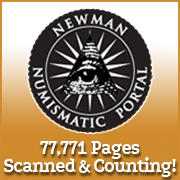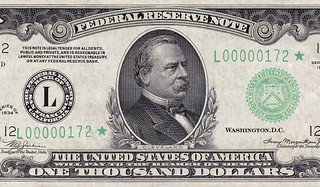
About UsThe Numismatic Bibliomania Society is a non-profit organization devoted to the study and enjoyment of numismatic literature. For more information please see our web site at coinbooks.org SubscriptionsThose wishing to become new E-Sylum subscribers (or wishing to Unsubscribe) can go to the following web page link MembershipThere is a membership application available on the web site Membership Application To join, print the application and return it with your check to the address printed on the application. Membership is only $20 to addresses in the U.S., $25 for First Class mail, and $30 elsewhere. For those without web access, write to: Terry White, Treasurer
AsylumFor Asylum mailing address changes and other membership questions, contact Terry at this email address: terrywhite5475@yahoo.com SubmissionsTo submit items for publication in The E-Sylum, just Reply to this message, or write to the Editor at this address: whomren@gmail.com BUY THE BOOK BEFORE THE COINSale Calendar |
- WAYNE'S WORDS: THE E-SYLUM DECEMBER 7, 2015
- KOLBE & FANNING 2016 NY BOOK AUCTION BIDDING
- NEWMAN PORTAL ADDS MINT CABINET ACCESSION BOOK, 1856-1903
- NEW BOOK: THE BANKNOTES OF IMPERIAL PERSIA
- NEW BOOK: A FISTFUL OF SHILLINGS
- AUTHOR'S NOTE ON THE COIN COLLECTOR'S SURVIVAL MANUAL
- JOHN BURNS REFERENCE LIBRARY UPDATE
- DIETER RAAB (1938-2015)
- THOMAS CEDERLIND (1959-2015)
- APPLETON, WILLIAM SUMNER (1840-1903)
- NOTES FROM E-SYLUM READERS: DECEMBER 27, 2015
- BOSTON NUMISMATIC SOCIETY ARCHIVES SOUGHT
- NUMISMATIC AND ANTIQUARIAN SOCIETY OF PHILADELPHIA ARCHIVES
- FANTASY COIN 'FIND' IN VIETNAM
- MORE ON THE GREAT SEAL STAR CONSTELLATION
- MORE ON COIN OPERATED GAS METERS
- WHAT ARE TOKENS?
- DOW METAL TOKENS AND MEDALS
- BLACK DOGS AND STAMPEES: THE RESEARCH OF KATHERINE SMOAK
- IDENTIFYING ROMAN COINS ON MICROPASTS
- EXHIBIT: THE GROLIER CLUB COLLECTS II
- SWEDEN'S CASH-FREE ECONOMY
- THE 1894-S DIME
- ARTICLE: USED BOOKSTORES ARE MAKING A COMEBACK
- GEESE ON COINS AND MEDALS
- RUSSIA ISSUES CRIMEA BANKNOTE
- ZIMBABWE’S CURIOUS PLAN TO ADOPT CHINA’S CURRENCY
- WHY DO WE NO LONGER USE $1,000 BILLS?
- THE SAINT NICHOLAS BANK
- FEATURED WEB PAGE: C4 LENDING LIBRARY
Click here to access the complete archive
To comment or submit articles, reply to whomren@gmail.com
WAYNE'S WORDS: THE E-SYLUM DECEMBER 27, 2015

New subscribers this week include: Tony Micciche. Welcome aboard! We now have 1,911 subscribers.
This week we open with a bidding reminder from Kolbe & Fanning, a fabulous new digitized resource from the Newman Numismatic Portal, two new books and an author's note from Scott Travers.
Other topics include the John Burns Reference Library, William Sumner Appleton, Dieter Raab, Tom Cederlind, the Boston Numismatic Society, the Numismatic and Antiquarian Society of Philadelphia, Dow metal, Sweden's cash-free economy, the 1894-S dime, and Zimbabwe's curious plan to adopt Chinese currency.
To learn more about the U.S. Mint Cabinet Accession book, the first Boston Numismatic Society medals, black dogs and stampees, Geese on coins and medals, a banknote for the annexation of Crimea, and why we no longer use $1,000 bills, read on. Have a great week, everyone!
Wayne Homren
Editor, The E-Sylum
KOLBE & FANNING 2016 NY BOOK AUCTION BIDDING
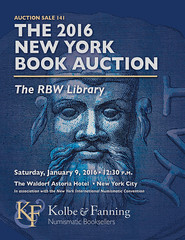 Kolbe & Fanning are looking forward to our 2016 New York Book Auction, which will take place on Saturday, January 9, 2016, beginning at
12:30 p.m. eastern time, at the Waldorf-Astoria Hotel in Manhattan in conjunction with the 2016 New York International Numismatic Convention. The
sale features the celebrated RBW Library on Roman Republican coinage, as well as other properties covering additional areas of numismatics.
Kolbe & Fanning are looking forward to our 2016 New York Book Auction, which will take place on Saturday, January 9, 2016, beginning at
12:30 p.m. eastern time, at the Waldorf-Astoria Hotel in Manhattan in conjunction with the 2016 New York International Numismatic Convention. The
sale features the celebrated RBW Library on Roman Republican coinage, as well as other properties covering additional areas of numismatics.
The sale will take place in the Norse Suite on the 18th Floor of the Waldorf-Astoria Hotel, the location of our past several New York Book Auctions. While we love to see our customers attend in person, there are several different methods available for bidding.
Bids may be submitted by post to the Kolbe & Fanning office in Gahanna, Ohio, but must be received by Monday, January 4 at the latest, as staff will be traveling to New York after that date. Similarly, bids may be faxed to the Gahanna office at (614) 414-0860, but must also be received by that date.
Bids may also be sent directly to David Fanning by email at df@numislit.com or by mobile at (614) 256-8915. Phone and email bids cannot be accepted on the day of the sale, however, so these must be received by Friday, January 8.
Live online bidding will be available during the sale through our custom auction platform at auction.numislit.com. Absentee bids may also be placed at any time on this site. Registration is required, and we recommend registering before the day of the sale in order to avoid delays. All lots are illustrated on this site, and the privacy of your identity and maximum bids is maintained.
Printed catalogues have been mailed to established clients and a PDF of the printed catalogue has been posted to the main numislit.com website.
As always, viewing of selected lots will be held in the Library Suite on the 18th Floor of the Waldorf-Astoria. Lot viewing will take place on Thursday, January 7 from 9:00 to 5:00, Friday, January 8 from 9:00 to 6:00 and before the sale on Saturday, January 9 from 9:00 to 12:00.
Kolbe & Fanning Numismatic Booksellers LLC is a licensed auction firm in the State of Ohio and is conducting the sale in conjunction with Marissa Russell, auctioneer. For more information, please see the Kolbe & Fanning website at www.numislit.com or email David Fanning at df@numislit.com. We look forward to your participation.
THE BOOK BAZARRE
NEWMAN PORTAL ADDS MINT CABINET ACCESSION BOOK, 1856-1903
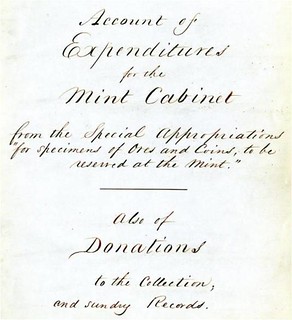 The Mint Cabinet Accession book, rediscovered within the library stacks of the Smithsonian earlier this year, is now available online in
the Newman Numismatic Portal collection on Internet Archive. John Dannreuther, to the amazement of all, exhibited a photocopy of this document during
the 2015 Chicago ANA, and the Smithsonian, via Collections Assistant Jennifer Gloede, has now furnished a digital copy to the Newman Portal.
The Mint Cabinet Accession book, rediscovered within the library stacks of the Smithsonian earlier this year, is now available online in
the Newman Numismatic Portal collection on Internet Archive. John Dannreuther, to the amazement of all, exhibited a photocopy of this document during
the 2015 Chicago ANA, and the Smithsonian, via Collections Assistant Jennifer Gloede, has now furnished a digital copy to the Newman Portal.
The first portion of the book summarizes the annual expenditures, and this is followed by the more interesting detail of what was added to the collection each year. This list is not comprehensive, but important individual pieces appear, with scattered “group lots” in between. The Mint Cabinet acquired U.S. coins from the year of issue on an annual basis, and one also notices a strong interest in U.S. territorial gold and pattern pieces. Foreign and ancient pieces were not ignored, indeed, the first coin listed for 1858 is a “silver pound Sterling of Charles I,” acquired for $35.
Many more tidbits are waiting to be found, and a careful reading of the buying habits over time may reveal changes in the administration of the Mint Cabinet. Note, not all objects recorded in this book are today present in the National Numismatic Collection. The Mint Cabinet was transferred to the Smithsonian around 1923, but an inventory listing precisely what was transferred is unknown.
To Mint Cabinet Accession book on Internet Archive:
Mint Accounts Book 1856 1903
(https://archive.org/details/MintAccountsBook18561903)
To read about Rediscovery of the Mint Cabinet Accession book in 2015, see:
WAYNE’S NUMISMATIC DIARY: AUGUST 16, 2015 : John Dannreuther
(www.coinbooks.org/esylum_v18n33a15.html)
NEW BOOK: THE BANKNOTES OF IMPERIAL PERSIA
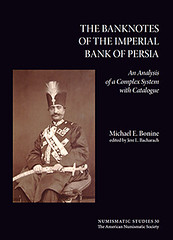 The Banknotes of Imperial Persia: An Analysis of a Complex System with Catalogue (Numismatic Studies Volume 30)
The Banknotes of Imperial Persia: An Analysis of a Complex System with Catalogue (Numismatic Studies Volume 30)
by Michael E. Bonine
edited by Jere L. Bacharach
List price: US$100
ISSN 0517-404-x
ISBN 978-0-89722-337-9
Hardcover, 148 pages, color images throughout, color plates
The Imperial Bank of Persia, established in 1889, was the first bank to issue banknotes and attempt to establish a modern banking system in Iran. Since it was established as the first State Bank of Iran but was also a British bank, many tensions developed between the bank and the Iranian government. Constant rivalry between the British and the Russians for influence and control of Iran influenced how and where the branch banks were established and operated.
The banknotes of the Imperial Bank of Persia are some of the most beautiful and largest notes ever issued for any nation, yet the story of these notes is complex. There are very few remaining specimens, especially of the earliest notes and those of higher denominations. An elaborate system of branch banks evolved, and the banknotes were printed or stamped as payable only for the issuing branch.
With the emergence of Reza Shah and the Pahlavi dynasty in the mid-1920s, the desire of Iranians to control their own national bank and curtail the influence of the British led to establishment of the Bank Melli Iran (National Bank of Iran). By 1932 the right of the Imperial Bank of Persia to issue banknotes had been withdrawn.
Few researchers have examined the subject in detail, and general references often have inaccurate information. The following study by Michael Bonine attempts to fill in some of the gaps and includes an analysis of several hundred lower-denomination banknotes.
Michael E. Bonine (1942–2011) was an active member of the University of Arizona’s Departments of Near Eastern Studies and Geography, and founding director of Arizona’s School of Middle Eastern and North African Studies. He published extensively on the human and physical geography of the Middle East. He also turned his hobby of collecting into a scholarly activity as he systematically acquired banknotes of the Imperial Bank of Persia. Extensive research, particularly in London, and painstaking studies of the eighteen denominations printed for the twenty-eight bank branches resulted in this monograph on the Imperial Bank of Persia banknotes.
Retail price: $100.00 ANS Members Price $70.00
expected to ship in February 2016
For more information, or to order, see:
The Banknotes of Imperial Persia: An Analysis of a Complex System with
Catalogue (http://numismatics.org/Store/Persianbanknotes)
NEW BOOK: A FISTFUL OF SHILLINGS
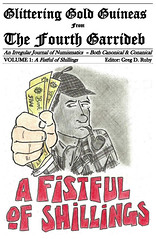 The Fourth Garrideb is pleased to announce the publication of its first monograph. Intended to be an annual publication featuring
posts on this website from the previous year, the series will be called Glittering Gold Guineas from The Fourth Garrideb. Each volume in the
series will be subtitled and the 2016 edition is called A Fistful of Shillings.
The Fourth Garrideb is pleased to announce the publication of its first monograph. Intended to be an annual publication featuring
posts on this website from the previous year, the series will be called Glittering Gold Guineas from The Fourth Garrideb. Each volume in the
series will be subtitled and the 2016 edition is called A Fistful of Shillings.
Thanks to the 29th Garrideb, Dr. Bob Katz, for suggesting the title. The artwork on the cover was done by an Baltimore area caricaturist, Paul A. Doughty.
The series is named Glittering Gold Guineas in homage to the article that the noted Sherlockian, Jay Finley Christ, had published in the October 1951 edition of The Numismatist, the official publication of the American Numismatic Association. This article was the first serious attempt to combine the Canon of Sherlock Holmes with numismatics. We are proud to include it as the first chapter in our monograph.
Other chapters in the monograph, include:
- Sir Arthur Conan Doyle and the Mystery of the Lost Bag of Golden Coins by Frank Sellens
- Arthur Conan Doyle and the HMS Foudroyant
- Sir George Newnes’ “Entente Cordiale” Medal
- The Scandalous Bohemians of New Jersey Medal
- A Nicaraguan Stamp and the Sherlock Holmes Medal
- The Sherlock Holmes Centennial Art Medal Collection
- Conan Doyle and the Mystery of the Vanishing Football Cup
- Where Would Dr. Lysander Starr Have Done His Banking?
- Numismatic Remembrances of the Boer War
One hundred copies of the 60 page monograph have been published. The monograph can be purchased HERE for $13 (including shipping and handling). A PDF file version can be purchased for $10 and downloaded.
This monograph will be available for purchase during the upcoming BSI Weekend in New York the weekend of January 13, 2016.
For more information, or to order, see:
TFG Publishes First Monograph
(http://fourthgarrideb.com/2015/12/tfg-publishes-first-monograph/)

AUTHOR'S NOTE ON THE COIN COLLECTOR'S SURVIVAL MANUAL
 The Coin Collector's Survival Manual®, Seventh Edition was published by Random House in 2010. A reprint of that five-year-old
edition, the Revised Seventh Edition, was published by Penguin Random House in September 2015.
The Coin Collector's Survival Manual®, Seventh Edition was published by Random House in 2010. A reprint of that five-year-old
edition, the Revised Seventh Edition, was published by Penguin Random House in September 2015.
Reviewer Michael Bugeja mistakes my "revised" edition – a reprint with some updates – for a new edition.
In software language, this is Version 7.1, not 8.0.
The Coin Collector's Survival Manual, Sixth Edition (2008) has 373 pages with a 16-page color insert.
The extensively overhauled Seventh Edition (2010) has 401 numbered pages with a 16-page color insert and 239,384 words.
There are 178 updates in the 2015 reprint. But, remember, this is not the Eighth Edition. So that there would not be the kind of confusion that the reviewer creates, the publisher assigned both books the same ISBN number.
Significant updates were made within the confines of making changes to pages without disrupting the pagination. These updates had to be made with the precision of a jigsaw puzzle.
I have decades of experience in publishing revised editions of books. It's an art to be able to remove a paragraph from a page and replace it with another paragraph of exactly the same length. This can update and refresh an entire section of a book, but to the casual observer it might appear that no change was made. Another way to include an update is to add material at the end of a chapter or any place else where a blank space exists. Changes of this style make it cost-effective to update a book.
In fact, the Revised Seventh Edition is remarkably up-to-date for a reprint of a five-year-old edition. Important revisions generally fall within the same sections and pages so that a new index is not required and the page numbering remains intact. These can be found in: Chapter 5: "Grading Services and the Plastic Revolution"; Chapter 6: "New Services Land A 1-2 Punch to Protect You"; Chapter 10: "A Grade Leap Forward"; Chapter 12: "Registry Sets Get High Grades"; Chapter 15: "Buying Coins on the Internet and by Mail"; Chapter 18: "Don't Let Uncle Sam Pick Your Pocket" (the newest tax and estate-planning secrets are included, with every bit of tax advice revised and updated by leading tax and legal experts for 2015 and beyond); Chapter 22: "Using the Legal System to Protect Your Coins"; Chapter 23: "Don't Turn Your Valuables Into Fool's Gold"; and Appendices.
Buying coins over the Internet still entails serious perils and pitfalls for inexperienced collectors. So it is no mistake that I beef this up and leave warnings from previous editions intact about buying coins online.
It isn’t Michael Bugeja’s critical comments that concern me; he also has some nice things to say about the basic book. Rather, it’s his failure to recognize The Coin Collector's Survival Manual, Revised Seventh Edition for what it is – and what the title says it is: a revision of the Seventh Edition.
For more information, or to order, see:
The Coin Collector’s Survival Manual, Revised Seventh Edition
(www.penguinrandomhouse.com/books/203013/the-coin-collectors-survival-manual-revised-seventh-edition-by-scott-a-travers/9780375723391/)
To read the earlier E-Sylum article, see:
BOOK REVIEW: COIN COLLECTORS SURVIVAL MANUAL, 7TH ED.
(www.coinbooks.org/esylum_v18n51a07.html)
JOHN BURNS REFERENCE LIBRARY UPDATE
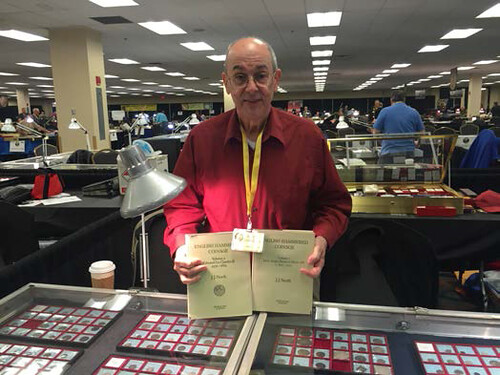
Andy Singer, dealer in Ancient Coins, poses with donation
PAN received a very appreciated book donation to our library during the fall show. Ancient coin dealer Andy Singer donated the two volume set of English Hammered Coinage by J.J. North. Andy has been a strong supporter of the concept of a traveling numismatic library to be available at coin shows. Our library curator Ed Krivoniak has been entering our accumulated collection into a spreadsheet to make it easier to ascertain what would be most beneficial to continued growth.
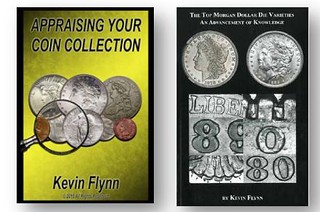 Kevin Flynn also donated a significant number of his many authored books to the library. In summary, the PAN fall show was a windfall for
donations and a popular gathering place for our enlightened bibliophiles to meet and exchange ideas and opinions. It has become a spot with a purpose
on the show floor. Now, if we can just keep the air in the tires to get it to as many shows as possible, then we would revel in its success and maybe
we can open a few windows to an expanded area of numismatics. Please have a look at our Burns Library page on our website and consider a monetary or
book donation to help us along.
Kevin Flynn also donated a significant number of his many authored books to the library. In summary, the PAN fall show was a windfall for
donations and a popular gathering place for our enlightened bibliophiles to meet and exchange ideas and opinions. It has become a spot with a purpose
on the show floor. Now, if we can just keep the air in the tires to get it to as many shows as possible, then we would revel in its success and maybe
we can open a few windows to an expanded area of numismatics. Please have a look at our Burns Library page on our website and consider a monetary or
book donation to help us along.
For more information, or to donate, see:
John Burns Memorial Reference Library
(http://pancoins.org/john-burns-memorial-reference-library/)
THE BOOK BAZARRE
DIETER RAAB (1938-2015)
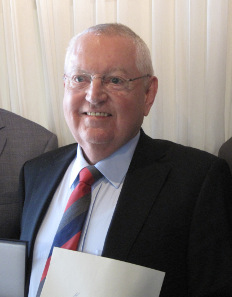 On Monday, December 20, 2015, Dieter
Raab died, long-time owner of the Frankfurt-based numismatic trade establishment Dr. Busso Peus & Co. With his passing, we lose one of the
most lovable figures of the of the coin trade in post-war Germany.
On Monday, December 20, 2015, Dieter
Raab died, long-time owner of the Frankfurt-based numismatic trade establishment Dr. Busso Peus & Co. With his passing, we lose one of the
most lovable figures of the of the coin trade in post-war Germany.
Dieter Raab was born in Steinhöring near Munich on December 11, 1938. But he grew up in Stuttgart, where his father owned a pub as he never grew tired of telling. In this pub, he earned his first money and invested it right away into something useful, in coins.
As a twelve-year-old, Dieter Raab started collecting. By the time he began studying business administration a few years later, he had already become an experienced coin connoisseur. The people in Stuttgart were aware of this. And so, after the first semester, Kurt Jaeger, living at Stuttgart as well and author of the well-known Jaeger catalog of German coins after 1871, got Dieter Raab a job at the Münzen und Medaillen AG. What Dieter Raab found with this job fulfilled his lifelong dream and made him quit university immediately and plunge into gaining practical experience. Dieter Raab was always enthusiastic when he talked about the time he worked in Basel, not least because it was during his stay at Münzen und Medaillen AG that he met his wife Lilo. She was as a secretary there, and Erich Cahn never really forgave his assistant that he not only left MMAG in 1967, but took the most competent secretary with him as his wife.
In 1966, there was the opportunity to take over the renowned company Dr. Busso Peus in Frankfurt, together with Peter Schulten. The company-takeover was only subject to one condition. The name of the house should be retained. To Dieter Raab, this did not pose an obstacle. Personally modest, he did not care about the name of the house as long as it gave him the opportunity to fulfill his dream of the perfect coin house.
In 1973, Peter Schulten retired, shortly after the coin house Dr. Busso Peus Nachf. had moved to the current premises at Bornwiesenweg 34. There, Dieter Raab led the company in his own style. He showed a warm friendliness as it is hard to find. He always placed the love for numismatics and the customer at the center. The customers rewarded him with their consignments. Dieter Raab auctioned off the important Mainz collection of Dr Rudolph Walther. Still a standard work for the bracteates is his auctions of the collections of Friedrich Bonhoff I and II. Largely unknown but still a standard work is the collection of pilgrimage medals of Dr Busso Peus. In 1993, Dieter Raab was commissioned with auctioning off the duplicates of the Berlin Coin Cabinet. This was followed by the remaining stocks of the State Bank Berlin in twelve auctions between 1994 and 2000 as well as the old shares and securities of the GDR in five auctions between 2002 and 2009.
Even though, until his death, Dieter Raab did not want to stop “playing with coins” – that is how he referred to the challenging task of describing and identifying coins –, he passed the ownership of the company into the hands of his son Christoph Raab as early as 2007. Nevertheless he continued working in his office every day, as long as his health permitted. What else could he do? The coins were his life.
With his passing, we not only lose a person who always deemed integrity, fairness and reliability more important than a short-term gain. He was an incarnation of the joy of life. Nobody could wax lyrical about things more enthusiastically, whether about a coin, skiing in the Swiss mountains, a good restaurant (preferably with a refined Italian cuisine), a good wine or a good conversation. Dieter Raab enjoyed his life and he shared this love for life generously with many others.
To read the complete article, see:
Dieter Raab (1938-2015) (www.coinsweekly.com/en/News/4?&id=3827)
THOMAS CEDERLIND (1959-2015)
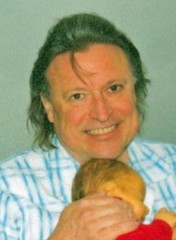 Cederlind, Thomas 56 Aug. 09, 1959 Dec. 16, 2015 Thomas Bentley Cederlind passed away Dec. 16, 2015, in Portland. He was a highly renowned
numismatist and historical scholar, focusing on ancient Greek and Roman history and artifacts. As such, he traveled extensively throughout Europe and
the U.S. Born and raised in Bellingham, Wash., Tom subsequently moved to Portland and attended Lewis & Clark College, ultimately graduating magna cum
laude from Pomona College in Pomona, Calif. in 1986. The youngest of four brothers, Tom's passing was a major and unexpected loss. His surviving
family includes his son, Leif Spenser Broncova Cederlind; and brothers, Jim and Gary. Tom is in our prayers and remains in our hearts. The loss of
our loving brother will be felt for a long time to come. Visitation will be from 3 p.m. to 5 p.m. Tuesday, Dec. 29, 2015, with a funeral at 11 a.m.
Wednesday, Dec. 30, 2015, at Westford Funeral Home in Bellingham.
Cederlind, Thomas 56 Aug. 09, 1959 Dec. 16, 2015 Thomas Bentley Cederlind passed away Dec. 16, 2015, in Portland. He was a highly renowned
numismatist and historical scholar, focusing on ancient Greek and Roman history and artifacts. As such, he traveled extensively throughout Europe and
the U.S. Born and raised in Bellingham, Wash., Tom subsequently moved to Portland and attended Lewis & Clark College, ultimately graduating magna cum
laude from Pomona College in Pomona, Calif. in 1986. The youngest of four brothers, Tom's passing was a major and unexpected loss. His surviving
family includes his son, Leif Spenser Broncova Cederlind; and brothers, Jim and Gary. Tom is in our prayers and remains in our hearts. The loss of
our loving brother will be felt for a long time to come. Visitation will be from 3 p.m. to 5 p.m. Tuesday, Dec. 29, 2015, with a funeral at 11 a.m.
Wednesday, Dec. 30, 2015, at Westford Funeral Home in Bellingham.
To read the complete article, see:
Thomas Cederlind
(http://obits.oregonlive.com/obituaries/oregon/obituary.aspx?n=thomas-cederlind&pid=177018317&)
APPLETON, WILLIAM SUMNER (1840-1903)
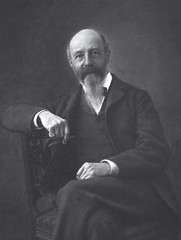 Appleton, William Sumner (1840-1903), Tycoon, Lawyer, Author, Scholar in Numismatics, Heraldry and Genealogy, Collector of Coins and
Medals, Philanthropist.
Appleton, William Sumner (1840-1903), Tycoon, Lawyer, Author, Scholar in Numismatics, Heraldry and Genealogy, Collector of Coins and
Medals, Philanthropist.
He was born at Boston, Massachusetts, on January 11, 1840, son of Hon. Congressman Nathan Appleton (1779-1861) and Harriot Coffin (1802-1867). His father, a native of New Hampshire, moved to Massachusetts and became a wealthy merchant and Congressman at Boston with an estate valued at $95,000, and four live-in-servants in the 1850 U. S. Census. The 1860 Census shows his father’s estate valued at $430,000. His father was a Fellow of the Academy and wrote on commerce and currency.
In 1856, William Sumner Appleton entered Harvard University and over the next decade graduated with three degrees : B.A. 1860; A.M. 1864; LL.B 1865.
He inherited a fortune from his father upon his death in 1861 leaving him independently wealthy without any need for gainful employment.
In April of 1862 he went abroad on his first of six European sojourns during his lifetime.
He was proficient in several foreign languages including Latin, French and German. He was a member of the Massachusetts Historical Society and a Fellow of the American Academy, a life member of the New England Historic Genealogical Society.
He was an avid and prolific genealogical and numismatic author publishing numerous articles in several journals.
In 1867 he was appointed as a member of the commission to attend the annual assay of the United States Mint at Philadelphia. Later that year he published a landmark article on the Admiral Vernon Medals.
In February 1868, he purchased an 1804 Silver Dollar from Edward D. Cogan (1803-1884), a pre-eminent coin dealer, by trading duplicates from his collection for the equivalent value of $775.00.
The 1870 U.S. Census lists William Sumner Appleton as a retired lawyer with an estate valued at $500,000. He was not married at the time and had three live-in-maids and a butler.
From July of 1870 to1891, he served on the Committee of Publication and helped edit the American Journal of Numismatics, and Bulletin of American Numismatic and Archaeological Societies. Quarterly.
He left in June 1871 for Europe for more than a year. Before leaving he submitted his article to be published in July 1871 titled, “Medals of Lafayette,” in The American Journal of Numismatics.
In July 1871, while at London he won several coins at auction in Covent Gardens, from the firm of William Webster, which auctioned off 1796 and 1797 United States Half Dollars, 1796 Quarter Dollar, and dime, and 1793, 1795, 1800 uncirculated Large Cents.
While abroad he married Edith Ida Stuart (1849-1898) of Baltimore, Maryland, on August 12, 1871 at the United States Legation in Bern, Switzerland. Prior to the newlywed couple’s return from Europe they had their first child, a daughter, born to them while at Paris.
After the death of his wife Edith on January 20, 1892, he sold his estate at Boston and moved to Newton, Massachusetts.
He died on April 28, 1903 at Boston. He bequeathed his special collection of medals including his 1804 Silver Dollar to the Massachusetts Historical Society.
The first sale of his collection of 1,487 lots of English, United States Gold coins was sold posthumously by Charles Steigerwalt on May 21-22, 1907. The 1,503 lots of the Appleton Collection Part II, was auctioned by Charles Steigerwalt on January 18-19, 1910. The remainder of personal his coin and library collections were sold by Thomas L. Elder on May 10, 1913 and July 8, 1913.
To read the complete article, see:
APPLETON,
WILLIAM SUMNER
(https://sites.google.com/site/numismaticmallcom/encyclopedic-dictionary-of-numismatic-biographies/appleton-william-sumner-1)

NOTES FROM E-SYLUM READERS: DECEMBER 27, 2015
More on Courtney Coffing
David Thomason Alexander writes:
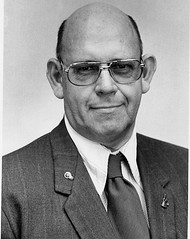 I just read in The E-Sylum of the death of my good colleague Courtney L. Coffing. There was a man who packed four or five lifetimes
into one! I remember reading his stories in Numismatic Scrapbook and The Numismatist in the 1950's, and was honored to work with
him at Amos Press in 1974-1981. He was, of course, the "patron saint" of Notgeld, both metallic and paper, at a time few others could stand
the material! When Russ Rulau jumped ship in 1974, creating a staff opening for me as it developed, Courtney was elevated to editor of both the
wildly successful World Coins magazine and the foundering Numismatic Scrapbook. When management annihilated both magazines three days
before the Amos Centennial in 1976, I thought Courtney would simply give up. Instead he worked manfully on long after I left Amos in 1981.
I just read in The E-Sylum of the death of my good colleague Courtney L. Coffing. There was a man who packed four or five lifetimes
into one! I remember reading his stories in Numismatic Scrapbook and The Numismatist in the 1950's, and was honored to work with
him at Amos Press in 1974-1981. He was, of course, the "patron saint" of Notgeld, both metallic and paper, at a time few others could stand
the material! When Russ Rulau jumped ship in 1974, creating a staff opening for me as it developed, Courtney was elevated to editor of both the
wildly successful World Coins magazine and the foundering Numismatic Scrapbook. When management annihilated both magazines three days
before the Amos Centennial in 1976, I thought Courtney would simply give up. Instead he worked manfully on long after I left Amos in 1981.
It was my exhausting privilege to criss-cross Europe with him in early 1977, discovering that Courtney knew European trains intimately, how to bail out of one train and cross nine tracks to our connector in four heartbeats! He was marvelously knowledgeable about all things German, who to see, where to go. We visited the Vienna and Paris Mints, conferred with Albert Pick at the Bayerische Hypobank, He torqued our return skillfully to fit in three extra days in Ireland, where we found the graves of my Great-grandfather and great-great grandfather in Ennis, County Clare. I bought my wedding rings at Shannon and we were soon back in New York on our way west to Sidney.
Courtney was fabulously lucky. He longed to take the New York Airways helicopter from JFK to LaGuardia airports but we missed our flight.. the one that disintegrated in the air landing atop the Pan Am building!
What a guy! He will be long remembered!
To read the earlier E-Sylum article, see:
COURTNEY COFFING (1920-2015) (www.coinbooks.org/esylum_v18n51a08.html)
John Graffeo Scanning ANS Auction Catalogs
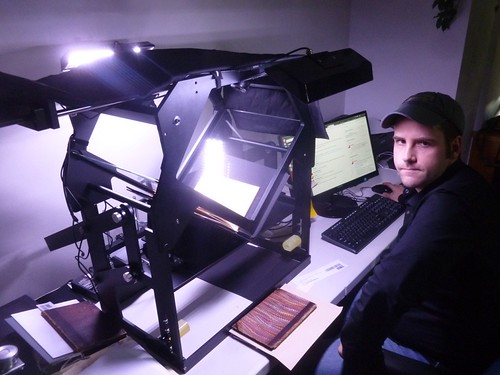
From the December 2015 ANS Enews from the American Numismatic Society:
The ANS recently announced a joint project with the Newman Numismatic Portal, which will enable greater access to American numismatic research material on both the ANS Digital Library and Newman Portal websites. Administered through Washington University Libraries in St. Louis, the Newman Portal has contracted with Internet Archive for the scanning operation at the ANS Library. John Graffeo is operating the workstation, scanning late 19th and earlier 20th century auction catalogs. John came to the ANS as an intern working toward the completion of a master’s degree in library and information science; he has added many publications to our online catalog.
To read the earlier E-Sylum articles, see:
ANS PARTNERS WITH THE NEWMAN NUMISMATIC PORTAL
(www.coinbooks.org/esylum_v18n47a02.html)
NEWMAN NUMISMATIC PORTAL SPONSORS SCANNING AT ANS
(www.coinbooks.org/esylum_v18n51a03.html)
MCA Meeting at 2016 NYINC
Skyler Liechty writes:
The Medal Collectors of America (MCA) will be holding its winter meeting during the NYINC. It will be held in the Sutton Room at the Waldorf-Astoria in New York on Saturday January 9th at 12 pm local time, and will feature a not to be missed lecture entitled “The Lure and Lore of American Medals”, by the renowned Q. David Bowers.
Mr. Bowers has won just about every important award the hobby offers including, COINage magazine Numismatists of the Century, Professional Numismatists Guild’s highest award the Founders Award, as well as being inducted into the Numismatic Hall of Fame. We are proud to add our own Carl Carlson Award to his list of accomplishments; the Carlson was bestowed on Dave at our meeting this past August, serving well to illustrate the breadth of his knowledge extending, as it does, through the standard U.S. Mint series all the way to specialties such as historical medals.
Reaching The Numismatist Archives
Last week James Higby recounted his problems locating and downloading recent years of the digital Numismatist from the American
Numismatic Association web site, Dave Ginsburg writes:
The way I get to the Archives is to click on the current issue (after I log in, I click on the My ANA drop-down menu, then select Digital Magazines, then select the current issue) and when the current issue comes up, I click on the Archives icon in the top-left corner. The Archives open up in a window on top of the current issue, so there’s no direct URL that I can see. I use Firefox, so using another browser may yield a different experience.
James Higby writes:
You have to go to the ANA website and log in as a member. Then along the top row of tabs, select MY ANA and you get a drop-down. Select any one of the choices and wait for it to load. At the top left are four icons. Mouse over the one at the far left. It should read, "Archive Issues" in tiny font. Clicking that gets you into the complete issues that are on the ANA's website, fourteen at a time. Select any one of the issues and wait for it to load. Over to the right is a column of icons. One is a down arrow. Click that. The issue will load again. Once loaded, you can do a "save as" to your hard drive. Yet another "progress bar."
Some of the issues are upward of 150 megs and some take a long time to load. February and March 2009 do not have the down arrow. January 2009 has the down arrow, but when you click it you get a message that says, "The website declined to show this webpage."
It's a chore, but I guess it's better than nothing. The folder I have all these in is 5.69GB. I hope ANA comes out with a DVD set of the whole archive.
To read the earlier E-Sylum article, see:
MORE ON DIGITAL NUMISMATIC LITERATURE
(www.coinbooks.org/esylum_v18n51a12.html)
In Einstein We Trust
 Dr. Kavan Ratnatunga writes:
Dr. Kavan Ratnatunga writes:
As an astrophysicist I was amused when I saw the "In God we Trust" above the Einstein counterstamp on the 1915 coin, since it was his scientific framework of Space-Time that gives us a rational understanding of the universe we live in, including astrophysical effects such as gravitational lensing.
To read the earlier E-Sylum article, see:
COUNTERSTAMP COMMEMORATES ALBERT EINSTEIN
(www.coinbooks.org/esylum_v18n51a18.html)
A Card from the Oxford Numismatic Society
David Pickup sent this card from the Oxford Numismatic Society. Thanks! I hope everyone had a nice holiday. Image of a triple unite used by
kind permission of Dix Noonan Webb. Sold in November 2015 for £44 000.00.
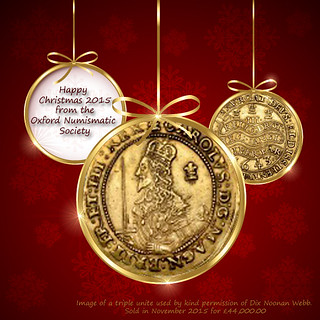
For more information on the Oxford Numismatic Society, see:
www.coinclubs.org.uk/Oxford.htm
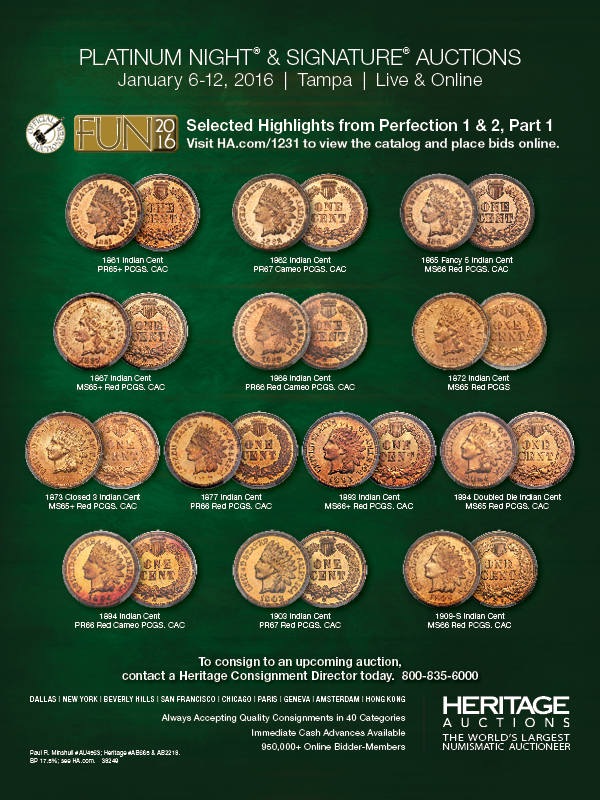
BOSTON NUMISMATIC SOCIETY ARCHIVES SOUGHT
High on our list are the early archives of the Boston Numismatic Society. Do they exist? -Editor
Boston Numismatic Society
On February 11,1860, eight gentlemen met at the new England historic genealogical society to create a numismatic organization not unlike
those formed in Philadelphia and New York in 1858. Dr. Winslow Lewis was elected its first president, and William Sumner Appleton Sr.,
already internationally recognized for the breadth and quality of his collection, its secretary. The latter’s presence would dominate the
Boston Numismatic Society (BNS) for the next 43 years.
Over the decades, growing respect for the BNS brought it active “correspondent” members, among them Lea Ahlborn, Charles Anthon, Oscar Dodson, W. E. Dubois, Henri Hoffmann, Abe Kosoff, Harold Mattingly, Joseph Mickley, M. Vernon Sheldon, George Tilden, and Moritz and Charles Wormser. In March 1870, the BNS was incorporated by the Massachusetts legislature, and its library and cabinet of coins and medals grew to include more than 1,000 significant rarities, which were available for use and study by its members. From the late 1880s, the BNS contributed funds annually to support the learned and respected, but languishing, American Journal of Numismatics, which later became an arm of the American Numismatic Society (ANS) in New York.
Monthly meetings were held of late afternoons in the comfortable surroundings of the New England Historic Genealogical Society, where BNS members exhibited and discussed such treasures as gold staters, early pattern coins and even an 1804 dollar. Joining Appleton in this pleasant exchange in later years would be Jeremiah Colburn, Henry Davenport, Joseph Finotti, Reverend Edmund Slafter, William T.R. Marvin and Sylvester Sage Crosby (BNS treasurer for 24 years).
In 1873 Isaac Wood of New York struck the first BNS medals, in conjunction with the New England Historic Genealogical Society. A ready contributor of medals to the cabinet, Wood became a BNS member and donated the canceled die for the medal.
In the late 1880s, membership in the BNS lagged, due in part to the aging of its members. Meetings became less frequent and, in the latter part of the century, the society donated $300 and its impressive cabinet of numismatic items to the Boston Museum of Fine Arts, and another $300 and its library to the Boston Public Library. Appleton’s death in 1903 left the BNS with but four of its original members.
In 1906 William T.R. Marvin, the society’s new secretary, promoted the membership applications of Horace L. Wheeler, James B. Chase Jr., Malcolm N. Jackson, Dr. Malcolm Storer and Howland Wood. New blood, revitalized intellectual exchanges and renewed enthusiasm—much encouraged by Wheeler’s stimulating and inspiring presence over the next 30 years— all effected a renaissance of the Boston Numismatic Society.
To read the complete article, see:
A Brief History of the Boston Numismatic Society
(http://digital.ipcprintservices.com/display_article.php?id=454506)
NUMISMATIC AND ANTIQUARIAN SOCIETY OF PHILADELPHIA ARCHIVES
Biographical/Historical note
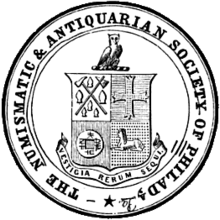 Formed in 1857, the Numismatic and Antiquarian Society of Philadelphia (NAS) was a non-profit organization “dedicated to the encouragement
and promotion of numismatic science and antiquarian research.” Important members of the organization included William S. Vaux, Joseph J. Mickley,
Henry P. McIlhenny, Dr. D. G. Brinton and Eli Kirk Price. Meetings were often held in the homes of members, where coins and medals were displayed and
papers on a variety of subjects, including the transition from wooden sailing vessels to steel steamships, the collections of the Union League,
Chinese export porcelain, and paper making at Ivy Mills, were read.
Formed in 1857, the Numismatic and Antiquarian Society of Philadelphia (NAS) was a non-profit organization “dedicated to the encouragement
and promotion of numismatic science and antiquarian research.” Important members of the organization included William S. Vaux, Joseph J. Mickley,
Henry P. McIlhenny, Dr. D. G. Brinton and Eli Kirk Price. Meetings were often held in the homes of members, where coins and medals were displayed and
papers on a variety of subjects, including the transition from wooden sailing vessels to steel steamships, the collections of the Union League,
Chinese export porcelain, and paper making at Ivy Mills, were read.
Scope and Contents note
The processed portion of the collection includes 0.8 linear feet of material and is arranged into seven series. Of these, the
Administration and Financial series contain the largest amount of material and are arranged chronologically. The General subseries of the
Administration series consists of meeting minutes, lists of officers and committee members, and several copies of the constitution and
by-laws. The Corporate Papers of the President subseries, generated by Betancourt, contains correspondence, papers regarding an exhibit of
NAS coins at the U. S. Mint, and other official papers. The Financial series documents the 1960s through the 1980s and contains annual
reports, operating budgets, receipts, and insurance records that include a valuation of the society’s assets.
Some of the other series, mainly Miscellaneous and Membership, reveal an organization that was largely focused on socializing. The society held numerous parties both in conjunction with and separate from formal business meetings. The Correspondence series mainly consists of handwritten letters from members, several of which include endorsements for potential members. The Other Organizations series includes additional information about the relationship between NAS and the U.S. Mint. The Memorabilia series contains an assortment of items including post cards, coin company catalogs, and two undated photographs.
Unprocessed additions form the bulk of the collection and are grouped in the final series. They include correspondence; meeting minutes; membership, financial, and administrative records; published proceedings; talks given at NAS meetings; clippings; photographs; and other items.
Series 8: Unprocessed papers 1857-1977
Scope and Contents note
These additions to the records of the Numismatic and Antiquarian Society of Philadelphia include member lists, invitations, typescripts,
published proceedings, accession catalogs for the society’s library, and correspondence and meeting minutes, some of which include
transcripts of talks given at meetings. The correspondence is from members, vendors, and members of the general public seeking expert
numismatic advice. The additions also include clippings, photographs, scrapbooks, a receipt book, etched printing blocks, and a glass
negative. The materials cover the period from the society’s founding and extend to the late 1960s. Two empty metal boxes that were found
with the additions are not included in the inventory.
Bound incoming and outgoing correspondence, 1892-1904; Payroll book, 1967-1968; Bound correspondence and notices, 1879-1881; Bound receipts of proceedings, 1887-1894; Loose correspondence in folders, 1948-1955, 1960-1962, undated; Minutes (in envelopes), 1916-1917; Loose papers, including 1914 map of Bucks and Montgomery counties
Glass negative of NAS bookplate; Printing plate and block; Financial volumes; Index to donors; Library accessions, 1884-1939; Receipt book, 1858-1871; Members and dues volume, 1860s-1913; Loose membership records, 1860s-1913; "Reliques of Barrister, Braxton, and Blair," circa 1869
Library accessions, 1884-1889; Bound correspondence, 1862-1870, 1871-1879, 1892-1919; Meeting notices, 1904-1922
"Cuts of Illustrations" (printing plates), Volume 33, 1946
Administrative files and correspondence, 1930s-1950s
Bound minutes in six volumes, 1857-1934
Published proceedings, pamphlets, and constitution & by-laws, 1870-1910
Correspondence, clippings, and essays (papers read before the society), 1905-1935
Bound correspondence, 1892-1904; correspondence files, 1884-circa 1907
Bound minutes in two volumes, 1935-1947; Curator records, 1975-1977; Propositions (proposals for new members), books 1 and 2, 1858-1918; Books of blank propositions; List of members, 1904; Financial reports, 1951-1964; Correspondence, 1959-1971; Loose miscellaneous papers
Bound minutes, 1948-1955; Published proceedings, constitution & by-laws, and other pamphlets, 1905-1946; "Wakehurst" pamphlet, 1974
Loose meeting notices, 1940s-1950s
Loose meeting notices, 1906-1945
Framed and unframed photographs of 1015 Clinton Street, Philadelphia, where NAS was founded in 1857; Bound manuscripts of Isaac Myers, society historiographer who died in 1887; 1886-1887, undated
To read the complete listing, see:
Numismatic and Antiquarian Society of Philadelphia records
(http://www2.hsp.org/collections/manuscripts/n/Numismatic3002.html)
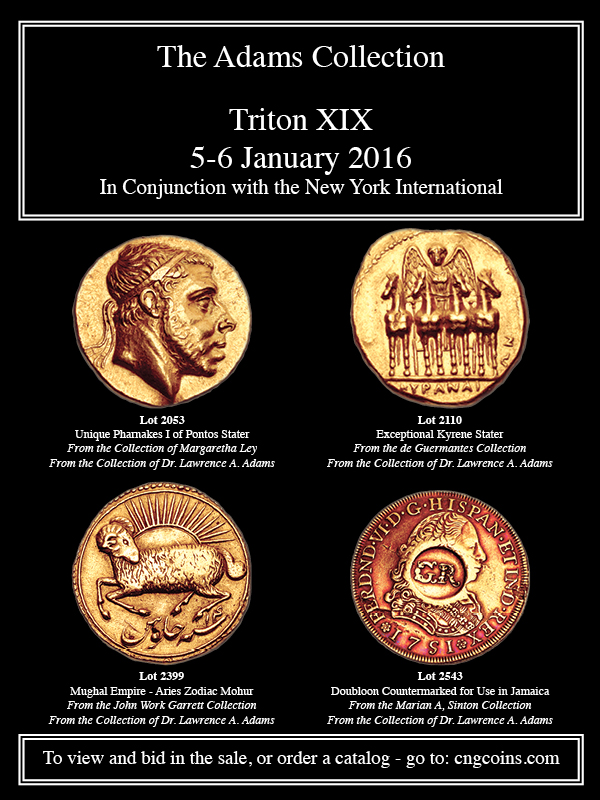
FANTASY COIN 'FIND' IN VIETNAM
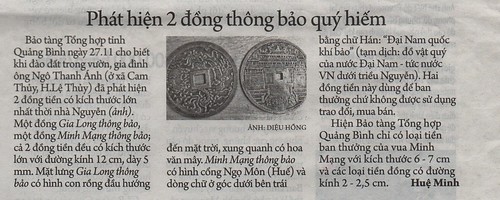
Your Oak Island 'Roman Sword' Find item in the latest E-Sylum was right on time with something I was getting ready to send to you!
Just this week in Viet Nam, a brother-in-law, Quang, here in Viet Nam, forwarded a Vietnamese newspaper to me with an item about someone finding some old rare coins in the ground. The item is on page 19 of the Thanh Nien newspaper of November 28, 2015. It shows the reverses of two copper "coins" identified as "old" Nguyen Dynasty coins of Emperors Gia Long and Minh Mang.
I sent the item to Craig Greenbaum in Houston to confirm my suspicions and he confirmed they are fantasy tourist items sold in Hue and many other cities and locations in Viet Nam. My wife, Phung, found them for sale in a Buddhist temple gift shop in the Mekong Delta several years ago. The "finder" of the coins likely buried them on his property and "found" them so he could sell them for a lot of money to an unsuspecting fellow Vietnamese or foreign tourist.
This is not the first time this has happened in Viet Nam and I know it will be happening again.
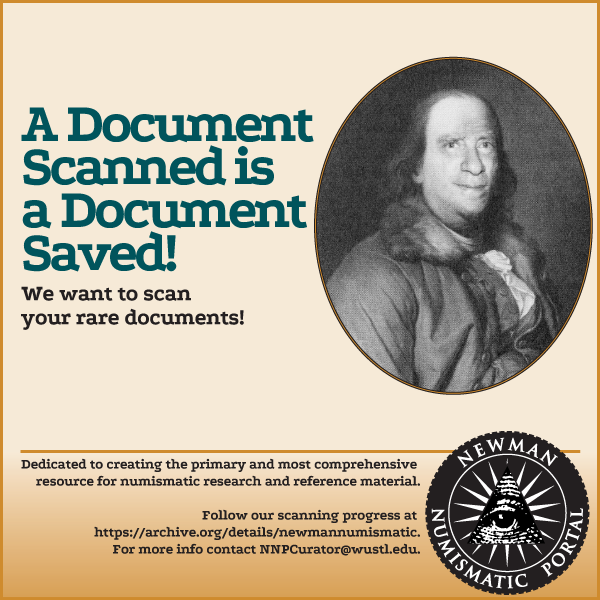
MORE ON THE GREAT SEAL STAR CONSTELLATION
Ron Thompson writes:
The star pattern reminds me of fractals. When you zoom in on a portion of the large pattern it is a smaller version of the large pattern. To make the analogy complete we would have to be able to zoom in on one of the stars and have it made of smaller stars in the same pattern as the larger pattern, which in this case I can’t imagine it does. However, it is a neat arrangement.
Astrophysicist Dr. Kavan Ratnatunga writes:
 A geometric arrangement of 13 "stars" is clearly NOT a constellation in the Astronomical sense of the word. Such a geometric
pattern will not be seen in the natural sky, even with gravitational lensing. These "Constellations" in most cases are just random patterns
of mostly unassociated stars, which were grouped by the imagination of ancient humans, who had a clear view of the night sky, without the light
pollution we have from cities today. The spikes of the stars (which are in reality spherical like our Sun), are caused by the optics of our eye or
observing instrument.
A geometric arrangement of 13 "stars" is clearly NOT a constellation in the Astronomical sense of the word. Such a geometric
pattern will not be seen in the natural sky, even with gravitational lensing. These "Constellations" in most cases are just random patterns
of mostly unassociated stars, which were grouped by the imagination of ancient humans, who had a clear view of the night sky, without the light
pollution we have from cities today. The spikes of the stars (which are in reality spherical like our Sun), are caused by the optics of our eye or
observing instrument.
To read the earlier E-Sylum article, see:
NOTES FROM E-SYLUM READERS: DECEMBER 20, 2015 : On the Great Seal Star
Constellation (www.coinbooks.org/esylum_v18n51a13.html)
MORE ON COIN OPERATED GAS METERS
Bob Fritsch writes:
I used to have one of these things in my house when stationed in Scotland in the late 70s. It took 5 pence/shillings and I forget how much gas I got from a single coin. This created a big problem during the very cold winter of 77-78, because the coin box was a finite size and could only hold so many coins.
Between a strike by the British gas workers and my non-conventional work hours, the thing never got emptied. It got to the point where I could not buy any more gas because the mechanism was jammed up. Calls to the gas company were ignored. The situation was resolved by an official complaint through the base and somebody showed up by appointment to empty the thing. The coin box was so full it would not slide out of the housing and the guy ended up bending it so enough coins could be scraped out to permit removal. Since he couldn’t put the coin box back in, he made me promise not to take any coins away after putting them in the machine. I got a whole new meter in the spring when the strike was over, and yes, there was a pile of coins waiting for them.
Charlie Davis writes:
I remember one well, and it was only 40 years ago. While on vacation in Penzance Cornwall in 1973, the flat we rented had one. It accepted the new 10P coins or the old Florins that coexisted in circulation. I don't recall how much time you got for your 10p or 2 bob, but it was wise to have a stack of them handy for fear of running out in the middle of your cooked dinner or shower. To put things in perspective, the farmers market in town charged 5p (1/-) for a head of lettuce that he went out back to pull out of the garden. We pay about $2.00 for a head of lettuce today making the few minutes of gas we bought worth today about $4.00
David Powell writes:
Gas and electricity meters were quite common in the UK when I was a boy, particularly, as you say, in multiply-occupied premises. The shilling was the standard coin used for the purpose, and I can remember visiting some friends in the mid-1960s to find them quite concerned about having got two shilling coins wedged alongside each other in the slot, thus potentially running them out of power without the means of being able, without an engineer's visit, to do anything about it.
Some early power meters were not as sophisticated as current slot machines at being able to detect unauthorised substitutes for the correct coin, and I am told that it was possible to freeze water to the shape of the relevant coin and use the resulting discs instead. This had the advantage that the evidence of the misdemanour evaporated, and the disadvantage of rusting up the machine.
The German two pfennig was a very useful substitute for the sixpence at one time, before machines became weight sensitive, but I am not sure what foreign coin was usually favoured in lieu of the shilling. My father's uncle {b.1902} worked for many years for the Cardiff Gas Company and he once said that they had 500,000 cut down British halfpennies in their vaults, all mutilated so as to imitate shillings, which it was not economically viable to shift and scrap. I once heard on the radio that the one county of Glamorgan produced 45% of all the mutilated currency of the UK {Cardiff being its major city}.
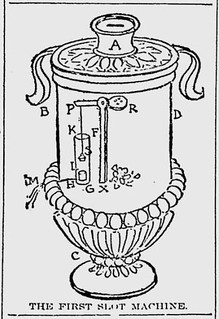 David also forwarded a link to an old newspaper article about the first known coin-operated vending machine, noting that "Your
hundred-year-old gas meter is a relative youngster as slot machines go." It's about the Holy Water dispenser created by Hero for a temple in
Alexandria some 2,000 years ago. We mentioned this in a 2009 E-Sylum article. -Editor
David also forwarded a link to an old newspaper article about the first known coin-operated vending machine, noting that "Your
hundred-year-old gas meter is a relative youngster as slot machines go." It's about the Holy Water dispenser created by Hero for a temple in
Alexandria some 2,000 years ago. We mentioned this in a 2009 E-Sylum article. -Editor
From Wikipedia:
His machine accepted a coin and then dispensed a fixed amount of holy water. When the coin was deposited, it fell upon a pan attached to a lever. The lever opened up a valve which let some water flow out. The pan continued to tilt with the weight of the coin until it fell off, at which point a counter-weight would snap the lever back up and turn off the valve.
To read the complete article, see:
https://news.google.com/newspapers?nid=1350&dat=19000322&id=5jYTAAAAIBAJ&sjid=
n_8DAAAAIBAJ&pg=1910,4703911&hl=en
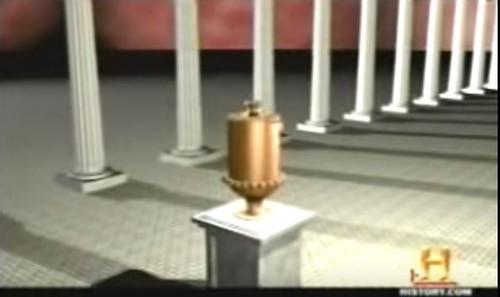
To read the complete articles, see:
Greeks invented coin operated VENDING MACHINES 2200 years ago...
(www.youtube.com/watch?v=mH9m72q3ElU)
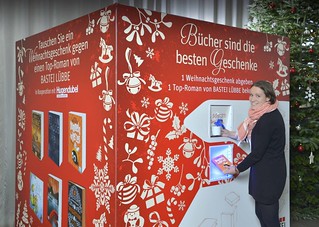 German trade publisher Bastei Lübbe and book retailer Hugendubel have come up with an unusual idea to get rid of unwanted Christmas
presents.
German trade publisher Bastei Lübbe and book retailer Hugendubel have come up with an unusual idea to get rid of unwanted Christmas
presents.
The companies have invented a vending machine (pictured below) where consumers can dump a present and exchange it at the touch of a button for a book.
The device will be set up outside Hugendubel branches on 28th December in a busy shopping centre in Munich, followed by appearances in Ingolstadt (29th December) and Nuremberg (30th December).
Bastei Lübbe will supply seven frontlist titles by bestselling authors like Rebecca Gable and Ethan Cross for the campaign.
All unwanted presents will be given to local charities.
To read the complete article, see:
German machine vends books in
exchange for unwanted presents (www.thebookseller.com/news/german-machine-vends-books-exchange-unwanted-presents-318788)
To read the earlier E-Sylum articles, see:
THE WORLD'S FIRST COIN-OPERATED VENDING MACHINE
(www.coinbooks.org/esylum_v12n24a23.html)
COIN OPERATED GAS METER (www.coinbooks.org/esylum_v18n51a33.html)

WHAT ARE TOKENS?
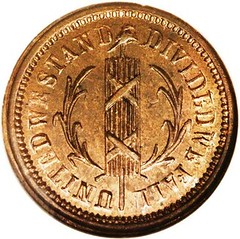 Definition
Definition
Tokens are coin-like, sometimes quasi-monetary items that usually look similar to coins, but were not issued by a legal government minting
authority. Tokens include items such as:
- Arcade tokens such as those used to play games in an arcade
- Commemorative "coins" issued by private mints in base metals and precious metals
- Hard Times tokens that were issued during the period from 1834-1844 by private merchants, companies, and banks to fill the need for token coinage during a national banking crisis
- Civil War tokens that were issued by companies, merchants, and banks to fill the need for token coinage during the U.S. Civil War.
- Challenge Tokens (aka Challenge Coins) usually issued by one of the branches of the United States military in order to prove membership in the organization when challenged
- There are also many other types of non-official, coin-like objects that fit into the generic (non-numismatic) definition of "tokens".
Coins Versus Tokens
The key differentiator between a coin and a token is that coins are of legal tender in the country that issued them. This means that a
country passes legislation authorizing the production of currency to facilitate commerce. This can consist of coins and paper money. The
currency is usually marked with a denomination that indicates its value.
Tokens on the other hand can be issued by any person, private company or organization. They are not of legal tender status since they are not issued/authorized by a country. Tokens may indicate a value or equivalent good or service.
For example, "Good for One Carwash", "Value 25 Cents at ABC Company", or "Good for One Videogame Play".
In the United States, tokens cannot have any indication nor appear to be issued by the United States. This may include not using the words "United States" and indicating a denomination. This is specifically defined in the United States Constitution (Article I, Section 10, Clause 1).
Collecting Tokens
Since tokens have been issued by such a wide variety of people, companies and organizations there is no definitive resource that catalogs
all tokens ever issued. However, there have been publications that have covered Civil War Tokens and Hard Times Tokens.
Many people collect tokens by theme or topic. One popular theme is to collect game tokens from video gaming arcades. Another one is to collect Challenge Tokens that pertain to a particular branch of the military. For example, challenge tokens from the United States Army.
To read the complete article, see:
Tokens - What are Tokens?
(http://coins.about.com/od/coinsglossary/g/coin_tokens.htm)
DOW METAL TOKENS AND MEDALS
Midland City Lines transportation Token (MI 635-A)
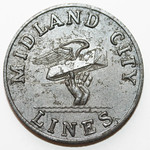

1939 Golden Gate International Expo Medal
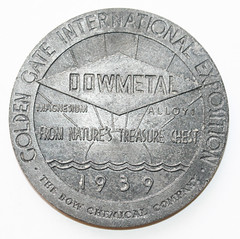
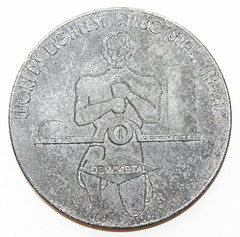
Dave adds:
These are not attractive pieces, but I’ve never seen any that were.
To read the earlier E-Sylum articles, see:
NUMISMATICS OF THE DOW-DUPONT CHEMICAL COMPANIES
(www.coinbooks.org/esylum_v18n50a26.html)
NUMISMATICS OF THE DOW-DUPONT CHEMICAL COMPANIES
(www.coinbooks.org/esylum_v18n51a17.html)
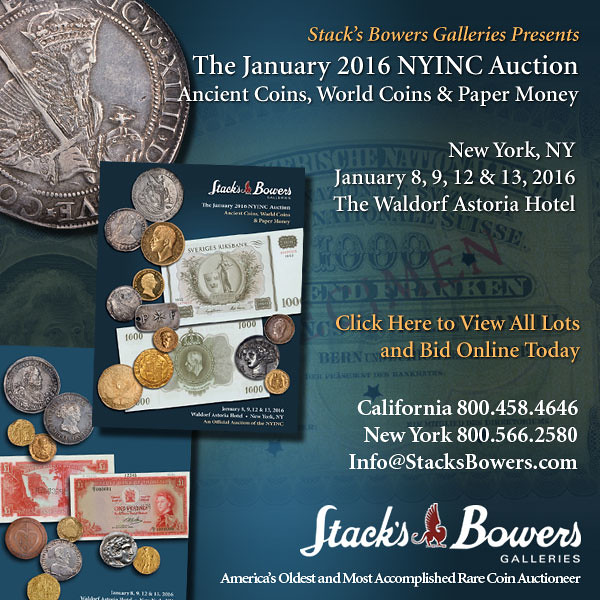
BLACK DOGS AND STAMPEES: THE RESEARCH OF KATHERINE SMOAK
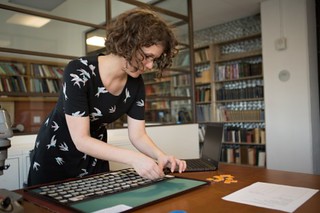 Last week Katherine Smoak, a graduate student in the Department of History at Johns Hopkins University, visited the ANS to research coins
and counterfeiting in the eighteenth century Atlantic world. Katherine was kind enough to sit for a short interview about her work, and what follows
is a lightly edited transcript of our talk.
Last week Katherine Smoak, a graduate student in the Department of History at Johns Hopkins University, visited the ANS to research coins
and counterfeiting in the eighteenth century Atlantic world. Katherine was kind enough to sit for a short interview about her work, and what follows
is a lightly edited transcript of our talk.
What brings to you to the ANS today?
I am a Ph.D. candidate at Johns Hopkins University and I came to look at Caribbean coinage. I have been working on an article about counterfeits made in Birmingham and shipped to the Caribbean, mostly of Spanish and Portuguese coins, but also French billon coins.
And how did you get interested in numismatics?
Initially it came through an interest in crime and punishment in colonial America. I came across counterfeiters in this context and reviewing court records just made me realize how rich this sort of material about coins and paper money was.
What sort of material did you look at today?
Mostly at trays from the Caribbean cabinet. I am particularly interested in small change used mostly by enslaved peoples like black dogs and stampees. And then I was also looking at some higher value coins like cut Spanish silver and Portuguese gold half-joes that had been variously clipped and plugged. I was really interested in the counterstamps and what that means for different islands as they tried to certify weights and keep coins in circulation amidst a flood of counterfeits.
What is a black dog?
It was a small French coin that was supposed to be a copper and silver alloy that was sent to the French colonies in the Caribbean, but ended up circulating much more widely. My understanding of them from what I have been reading is that by the 1780s and 1790s, most all of the black dogs in circulation were counterfeits and not the original imported coin. What is circulating is something like a trade token that was being produced en masse in places like Birmingham and shipped to merchants and planters to use as small change.
Part of what was so exciting for me looking at the trays today was just to see what these coins I have been reading so much about looked and felt like. Getting to feel how heavy a silver dollar was and how tiny some of the cut pieces are was really great. With the copper coins, seeing how crude and thin and easy they presumably would have been to produce and counterfeit was interesting. Seeing how much counterfeit material there was relative to genuine coin on particular trays was pretty remarkable. The wear and clipping and plugging on the gold joes was pretty amazing and thinking about the tactile interactions with money that people are having and how you can feel when a coin has been altered.
Was there a particular coin that you found illuminating?
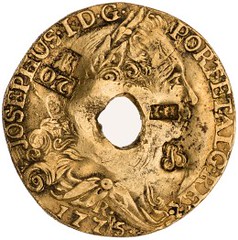 One of the most exciting things I saw was this Portuguese half-joe that had been holed and counterstamped for Trinidad, Berbice, and
Martinique. Being able to see the clipped edges and weigh it and see just how crude the holing looked was neat. All of the marks just show how widely
this coin circulated in the Caribbean. This was my first time actually seeing a half-joe. It was really exciting for me to hold one after reading all
these legislative minutes and Board of Trade letters about them.
One of the most exciting things I saw was this Portuguese half-joe that had been holed and counterstamped for Trinidad, Berbice, and
Martinique. Being able to see the clipped edges and weigh it and see just how crude the holing looked was neat. All of the marks just show how widely
this coin circulated in the Caribbean. This was my first time actually seeing a half-joe. It was really exciting for me to hold one after reading all
these legislative minutes and Board of Trade letters about them.
1798 Trinidad and Tobago Copper 1 stampee
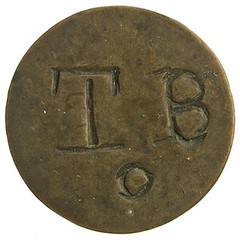
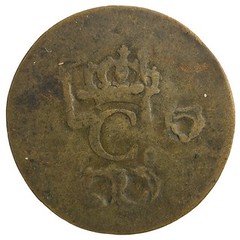
To read the complete catalog description, see:
http://numismatics.org/collection/1911.105.927
1800 Trinidad and Tobago Copper 1/2 stampee of Rapsey, H. E.
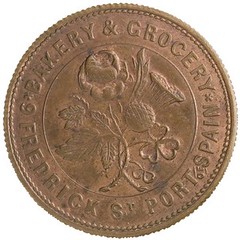
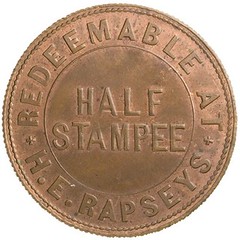
To read the complete catalog description, see:
http://numismatics.org/collection/1934.1.501
1870 London (England) Bronze 1 stampee of Declos, Francois
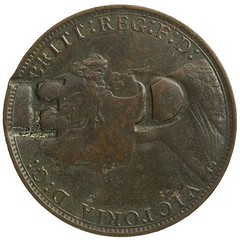

To read the complete catalog description, see:
http://numismatics.org/collection/1918.188.3
To read the complete article, see:
PROFILES IN RESEARCH: KATHERINE SMOAK
(www.anspocketchange.org/profiles-in-research-katherine-smoak/)
IDENTIFYING ROMAN COINS ON MICROPASTS
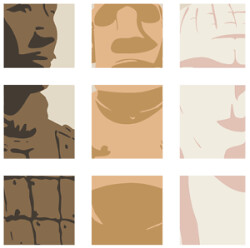 Micropasts is a web platform that hosts crowd-sourced collaborative research projects focused on archaeology, history, and heritage. The
admirable goal of Micropasts is, in their words, to “improve how people traditionally distinguished as academics, professionals and volunteers
cooperate with one another.” To this end, the website hosts a variety of projects that allow for contributions from enthusiasts, scholars, and the
interested public on a wide variety of different topics. It is jointly run by the UCL Institute of Archaeology and the British Museum with support by
the UK Arts and Humanities Research Council.
Micropasts is a web platform that hosts crowd-sourced collaborative research projects focused on archaeology, history, and heritage. The
admirable goal of Micropasts is, in their words, to “improve how people traditionally distinguished as academics, professionals and volunteers
cooperate with one another.” To this end, the website hosts a variety of projects that allow for contributions from enthusiasts, scholars, and the
interested public on a wide variety of different topics. It is jointly run by the UCL Institute of Archaeology and the British Museum with support by
the UK Arts and Humanities Research Council.
A relatively straightforward example of how the website works is a project that seeks to transcribe diaries kept by the noted Egyptian archaeologist, Sir Flinders Petrie. The project page includes a tutorial on how to contribute, which can involve either transcribing material directly from the scanned document, or reviewing the work of others to ensure its accuracy. A somewhat more complicated project is one by the British Museum that involves photo-masking medieval Pilgrim badges to create 3D models of the artifacts. All of the projects use the same simple interface which makes it easy to understand how you can help out, and there is a useful ‘Statistics’ tab for each that traces how the overall project is progressing.
There are a wide variety of different and salutary projects that users can contribute to, but we mention here because of a recently-launched numismatic one called the Roman Imperial Coin concordance.
This project was formulated by Daniel Pett of the British Museum and Ethan Gruber of the ANS to facilitate the addition of Roman coins catalogued in the Portable Antiquities Scheme (PAS) to the NEH-sponsored ANS database Online Coins of the Roman Empire (OCRE). The tutorial explains just how the process works, but the essential task is for users to try and identify more precisely what the RIC (Roman Imperial Coinage) number for a given coin drawn from the PAS database is. If and when a more precise identification of the RIC number is made and confirmed, it can then be integrated into the larger OCRE database. The PAS, which is a voluntary program that records small archaeological finds by the public in the UK, presently has over 200,000 Roman coins in its database so it is a potentially rich resource for additional coins and data for OCRE.

Of course, objects like the denarius above can only be integrated into OCRE when they have been properly identified so if you have time to lend a hand, head over to the project website!
To read the complete article, see:
IDENTIFYING ROMAN COINS ON MICROPASTS
(www.anspocketchange.org/identifying-roman-coins-on-micropasts/)
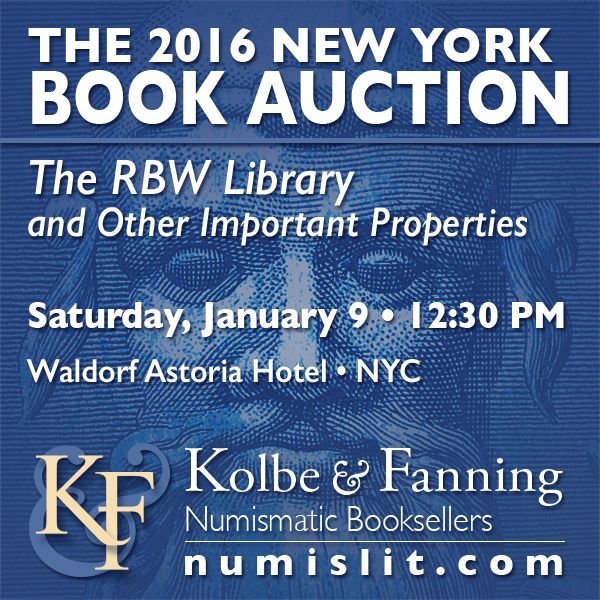
EXHIBIT: THE GROLIER CLUB COLLECTS II
Dan writes:
Here's an exhibit in New York well worth the time of anyone who lives in the area or will be visiting to attend the NYINC (i.e., Kolbe/Fanning auction). Although only one item appears to be explicitly numismatic, I notice that at least a couple of others are from the collections of numismatists who are Grolier Club members.
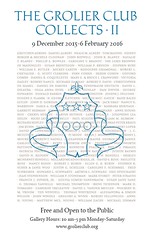 Exhibition: "The Grolier Club Collects II"
Exhibition: "The Grolier Club Collects II"
December 9, 2015-February 6, 2016.
Location: The Grolier Club,
47 East 60th Street,
New York, NY 10022
NOW OPEN IN OUR GROUND FLOOR GALLERY: "The Grolier Club Collects II," on view December 9, 2015-February 6, 2016. Behind every great collection lies a great story. That was the premise of the first Grolier Club Collects show in 2002/2003, and a dozen years later it remains the central idea of The Grolier Club Collects II, a gathering of books, manuscripts and works on paper drawn from the international membership of the Grolier Club. Reflecting the breadth and quality of those members’ varied collecting interests, the exhibition encompasses medieval manuscripts and early printed books as well as contemporary literature; rarities ranging from Old Master drawings and prints, to nineteenth- and twentieth-century posters, cartoons and ephemera to livres d’artiste, children’s books, book objects, and photographs. Each object comes with a tale, written by the collector, describing how and when the book, manuscript, or print was acquired, under what circumstances, how it fits (or does NOT fit) into an overall collecting scheme and—most importantly—why it is precious to the collector.

Tycho Brahe. Astronomiae Instauratae Progymnasmata
For more information, see:
http://www.grolierclub.org/

SWEDEN'S CASH-FREE ECONOMY
Parishioners text tithes to their churches. Homeless street vendors carry mobile credit-card readers. Even the Abba Museum, despite being a shrine to the 1970s pop group that wrote “Money, Money, Money,” considers cash so last-century that it does not accept bills and coins.
Few places are tilting toward a cashless future as quickly as Sweden, which has become hooked on the convenience of paying by app and plastic.
This tech-forward country, home to the music streaming service Spotify and the maker of the Candy Crush mobile games, has been lured by the innovations that make digital payments easier. It is also a practical matter, as many of the country’s banks no longer accept or dispense cash.
At the Abba Museum, “we don’t want to be behind the times by taking cash while cash is dying out,” said Bjorn Ulvaeus, a former Abba member who has leveraged the band’s legacy into a sprawling business empire, including the museum.
Not everyone is cheering. Sweden’s embrace of electronic payments has alarmed consumer organizations and critics who warn of a rising threat to privacy and increased vulnerability to sophisticated Internet crimes. Last year, the number of electronic fraud cases surged to 140,000, more than double the amount a decade ago, according to Sweden’s Ministry of Justice.
“It might be trendy,” said Bjorn Eriksson, a former director of the Swedish police force and former president of Interpol. “But there are all sorts of risks when a society starts to go cashless.”
Cash is certainly not dead. The Swedish central bank, the Riksbank, predicts it will decline fast but still be circulating in 20 years. Recently, the Riksbank issued newly redesigned coins and notes.
But for an increasing number of consumers, cash is no longer a habit.
At the University of Gothenburg, students said they almost exclusively used cards and electronic payments. “No one uses cash,” said Hannah Ek, 23. “I think our generation can live without it.”
To read the complete article, see:
In Sweden, a Cash-Free
Future Nears (www.nytimes.com/2015/12/27/business/international/in-sweden-a-cash-free-future-nears.html?_r=1)
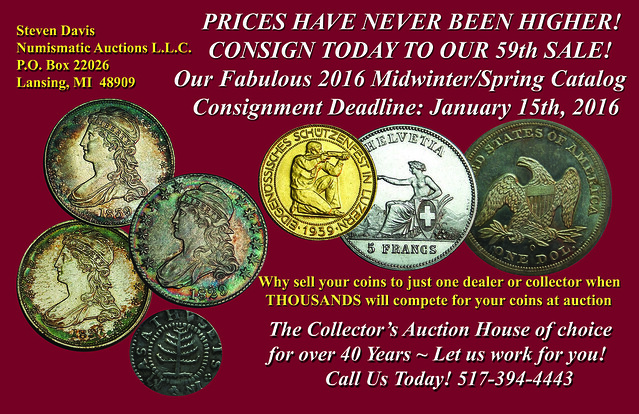
THE 1894-S DIME
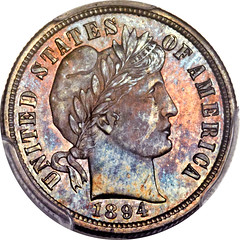
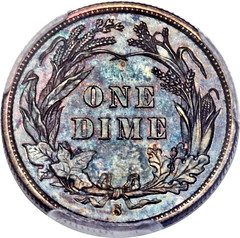
1894-S 10C Branch Mint PR66 PCGS Secure. CAC. Ex: Eliasberg. The 1894-S Barber dime is a classic rarity in American coinage, often grouped with the 1804 dollar and the 1913 Liberty nickel as "The Big Three" of United States numismatic rarities. In addition to its absolute rarity, the 1894-S is one of the best "Story" coins in all of numismatics. Generations of collectors have smiled at the notion of Superintendent John Daggett's young daughter, Hallie, spending one of these dimes for ice cream on her way home from the Mint. Even though recent research indicates this anecdote is fanciful, it has lost none of its charm.
Famous collectors like John M. Clapp, Louis Eliasberg, and James A. Stack have taken great pride in their ownership of this coin. The 1894-S Barber dime routinely sells for more than $1 million on the infrequent occasions when an example is offered at public auction, and private sales have been reported for more than $2 million, but the opportunity to own and contemplate one of these magnificent coins is truly priceless. Heritage Auctions is privileged to offer the finest-known, PCGS-certified example of this celebrated rarity in just its fourth auction appearance.
The San Francisco Mint struck nearly 2.5 million Barber dimes in 1893, and planned another substantial mintage in 1894. Five pairs of 1894-dated working dies were delivered in November of 1893, and another five pairs were delivered in January of 1894, to prepare for the year's coinage. Unfortunately, the Panic of 1893 caused a widespread and long-lasting economic recession and there was little demand for small change in the shrinking economy. Aside from a minuscule mintage of 24 pieces, delivered on June 9, no dimes were struck at the San Francisco facility in 1894.
The tiny mintage was duly recorded in Mint records and listed in the Report of the Director of the Mint for 1895 in the table on pages 212-213. In accordance with Mint policy, two coins were sent to Mint Director Robert Preston, in Philadelphia, for assay, per a June 9-dated letter from Acting Superintendent Robert Barnett. These coins were melted and assayed in due course. On June 25, two more examples were assayed as part of the monthly assay at the San Francisco Mint. A fifth specimen was sent to Philadelphia on June 28 to be reserved for the annual Assay Commission, which met early in 1895 to test and review the coinage from the previous year.
It seems that the remaining 19 specimens were placed in a bag of dimes and released into circulation, aside from a few coins that were obtained by Mint personnel at face value. Although no one could have foreseen it when the coins were struck in June, there would be no further orders for dimes in 1894 at the San Francisco Mint. Thus, the 1894-S Barber dime was a fabulous rarity from its time of issue.
All well-preserved examples of the 1894-S Barber dime exhibit reflective surfaces and the issue is uniformly sharply detailed, both hallmarks of traditional proof coins. Historically, the 1894-S has always been regarded as a proof issue, and both PCGS and NGC certify these coins as proofs, or branch mint proofs. However, recent research by Kevin Flynn and Q. David Bowers has called the proof status of the 1894-S into question. Only one pair of dies was used to strike the 24-coin mintage, and Flynn points out that there is no indication that either the planchets or the dies were specially polished.
Likewise, there is no indication that the coins were struck more than once. Bowers notes that the fresh dies imparted a prooflike surface to the unworn coins, but they lack the mirror-like depth of reflectivity seen on regular proof issues. The technical merits of this discussion will undoubtedly be hotly debated in the future, but no one doubts that all the coins were produced at the same time, in the same manner, so no example of the 1894-S can claim to be from a more elusive format than any other example. Since they are all either one thing or the other, the point is probably moot for collecting purposes.
To read the complete lot description, see:
1894-S 10C Branch Mint
PR66 (http://coins.ha.com/itm/proof-barber-dimes/1894-s-10c-branch-mint-pr66-pcgs-secure-cac/a/1231-5317.s)
THE BOOK BAZARRE
ARTICLE: USED BOOKSTORES ARE MAKING A COMEBACK
 Early next month, Pablo Sierra is opening a used bookstore in Northwest Washington — an unlikely bet in the digital age made even more
inconceivable, given that his only experience with books is reading them.
Early next month, Pablo Sierra is opening a used bookstore in Northwest Washington — an unlikely bet in the digital age made even more
inconceivable, given that his only experience with books is reading them.
“I guess it is pretty crazy,” Sierra said, echoing an observation shared by some of his friends.
Or maybe not. Sierra, like other book lovers, has read articles about slowing e-book sales and watched as independent bookstores such as Politics and Prose thrive, catering to readers who value bookish places as cultural hubs and still think the best reading device is paper.
Used bookstores, with their quintessential quirkiness, eclectic inventory and cheap prices, find themselves in the catbird seat as the pendulum eases back toward print. In many cities, that’s a de facto position: They’re the only book outlets left.
“It gets better and better every year,” said Susan Burwell, the co-owner of Reston’s Used Book Shop, the only used-bookstore left for an intellectually diverse Northern Virginia city of nearly 60,000 people.
Riverby Books D.C., a used-bookstore on Capitol Hill, closed last year after owner Steve Cymrot was hit by a truck and killed. His son Paul reopened the store in the fall — and didn’t hesitate. “The business side of it never gave us a moment’s pause,” he said. “We’ve never had better business.”
And it’s a business with good economics. Used bookstores can beat Amazon and other online booksellers on price, offering shoppers both a browsing experience and a money-saving one. Also, profit margins on used books are better than new ones — so good that many indies are adding used sections.
Sensing a good deal, entrepreneurs are jumping in.
Sierra, 38, is a former Navy officer with an MBA and experience in government contracting. His new store, in a small strip mall on Georgia Avenue NW in Park View, is called Walls of Books, a chain started by Gottwals Books in Georgia.
Owners still have to get people in the door. For that, readings and other events have been helpful. Sierra, whose bookstore is in a changing neighborhood with many Hispanic residents, will host bilingual events.
But nothing provides a stronger pull than the experience of browsing — getting lost in the stacks, making serendipitous finds, having chance conversations with interesting people. And with information so easy to find these days, used bookstores offer the thrill of the hunt.
To read the complete article, see:
In the age of Amazon, used bookstores are making an unlikely comeback
(www.washingtonpost.com/local/in-the-age-of-amazon-used-bookstores-are-making-an-unlikely-comeback/2015/12/26/06b20e48-abea-11e5-bff5-905b92f5f94b_story.html)
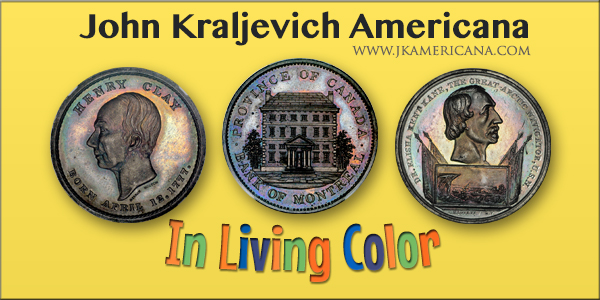
GEESE ON COINS AND MEDALS
It’s time for the dreaded “geese on coins” post for this month’s focus on The Blue Carbuncle. As we know, Henry Baker was bringing home a goose when he was attacked and left it behind upon the appearance of Peterson the commissionaire. Peterson brought the goose to Holmes and then brought it home to be prepared, which is when the blue carbuncle was discovered inside the goose. Now, let us take a few minutes to look at a few numismatic items that feature a goose.
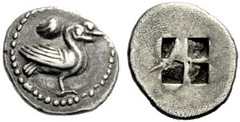 We have a silver hemiobol from the town of Eion in the Macedonia area of Greece. Eion DiobolThis coin, circa 480 BC, features two geese,
facing right, standing side by side, with a fig leave above.
We have a silver hemiobol from the town of Eion in the Macedonia area of Greece. Eion DiobolThis coin, circa 480 BC, features two geese,
facing right, standing side by side, with a fig leave above.
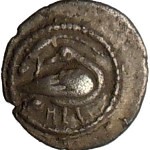 We have a silver diobol, also from Eion, featuring a goose and a lizard. This 13mm coin was struck struck in the years following the
Greco-Persian Wars.
We have a silver diobol, also from Eion, featuring a goose and a lizard. This 13mm coin was struck struck in the years following the
Greco-Persian Wars.

Our neighbors to the north, Canada, have featured a goose or geese several times over the last 50 years. A Canadian goose, flying to the left, was featured on the 1967 dollar commemorating Canada’s centennial. The 1/25th ounce gold coin that Canada struck in 2011 features a flock in flight. The 2014 5 dollar coin features a hunter taking aim at a pair of geese. The 2014 $20 silver bullion coin is reminiscent of the 1967 dollar, albeit with the goose flying right this time.
Also in 2010, the country of Niue also issued a silver $2 dollar coin with a theme of the six geese a-laying.
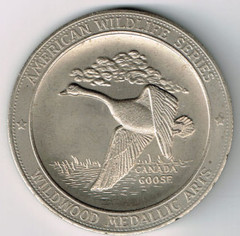
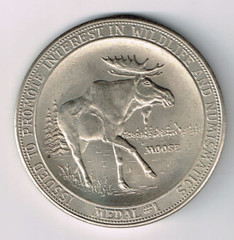
Wildwood Medallic Arts, featured a Canadian Goose on the obverse of the first medal they issued in their American Wildlife Series. This 38mm cupro-nickel medal was issued to promote wildlife and numismatics.
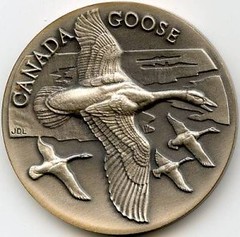
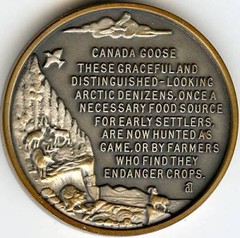
A few months back we discussed the Brigham Young medal that was issued by the Longines Symphonic Society. That same group issued another series entitled “America’s Natural Legacy” and commissioned the Wittnauer Precious Metals Guild to strike the medals. This 40mm sterling silver shows a flock of geese in flight.
There are several other modern coins that feature geese, primarily from Canada, that you can find for your collection.
To read the complete article, see:
Geese On Coins And Medals
(http://fourthgarrideb.com/2015/12/geese-on-coins-and-medals/)

RUSSIA ISSUES CRIMEA BANKNOTE

Russia on Wednesday issued a new banknote dedicated to Crimea, the Ukrainian peninsula it annexed last year, in a move likely to anger Kiev which says it wants the territory back.
Russia seized Crimea from Ukraine in March last year in a military operation denounced by the West which imposed retaliatory sanctions on Moscow that remain in place.
The new banknote, worth 100 rubles ($1.41), depicts a memorial to sunken ships in the port of Sevastopol, where Russia keeps its Black Sea Fleet, and the Swallow's Nest, a cliff top castle near Yalta.
The yellow-colored note also features a watermark of Empress Catherine the Great, who extended the borders of the Russian Empire in the eighteenth century to absorb Crimea.
Russia's central bank said in a statement it would issue 20 million of the new notes. It has previously minted a 10 rouble coin to celebrate Russia's control of Crimea.
To read the complete article, see:
Russia issues Crimea banknote in move
likely to irk Ukraine (http://www.reuters.com/article/us-ukraine-crisis-russia-banknote-idUSKBN0U60ZE20151223)
ZIMBABWE’S CURIOUS PLAN TO ADOPT CHINA’S CURRENCY
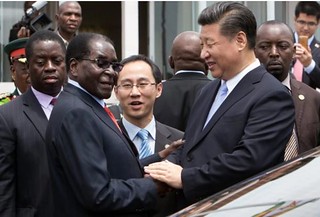 Want evidence that China is still making inroads in sub-Saharan Africa? Look no further than Zimbabwe, where the finance minister just
announced a plan to begin using the Chinese yuan as an official currency within the southern African nation — part of a deal in which Beijing will
also cancel about $40 million in debt.
Want evidence that China is still making inroads in sub-Saharan Africa? Look no further than Zimbabwe, where the finance minister just
announced a plan to begin using the Chinese yuan as an official currency within the southern African nation — part of a deal in which Beijing will
also cancel about $40 million in debt.
"There cannot be a better time to do this," Zimbabwean Finance Minister Patrick Chinamasa explained in a statement.
The news is just the latest wild twist for the Zimbabwean currency. Six months ago, Zimbabwe's central bank announced that it was finally phasing out the local currency, the Zimbabwean dollar, after years of hyperinflation had left the currency virtually worthless. Zimbabweans were told that they would be able to exchange bank account balances of up to 175,000,000,000,000,000 Zimbabwean dollars for just 5 U.S. dollars – a heartbreaking sum, given that it was many people's life savings.
In practice, the Zimbabwean dollar (and the $100 trillion notes that it eventually required) had already become little more than a kitsch souvenir. By 2008, foreign currencies such as the U.S. dollar and the South African rand had become de facto currencies thanks to a booming black market. The following year, the government announced that it would officially allow businesses to use these currencies, effectively abandoning the Zimbabwean dollar.
The new agreement would add the yuan to the list of currencies used for public transactions, and the Zimbabwean government said it would encourage its use. In the first stages of the plan, Reuters reports, Chinese tourists would be allowed to use the yuan to pay for services, and Zimbabwe would begin paying back its loans to China in the currency. The new switch may have other side effects, too: In recent months, some Zimbabwean economists had argued that the country should increase its use of the Chinese currency in a bid to get around U.S. sanctions.
If anything, the deal is further evidence of the lengths that strongman Robert Mugabe, long isolated by much of the Western world, is willing to go to secure the future of his relationship with China.
Notably, a Chinese group with murky ties to the government awarded Mugabe the Confucius Peace Prize – considered the Chinese version of the Nobel Peace Prize – in October, despite the Zimbabwean leader's long-standing reputation for human rights abuses.
To read the complete article, see:
Zimbabwe’s curious
plan to adopt China’s currency
(www.washingtonpost.com/news/worldviews/wp/2015/12/23/zimbabwes-curious-plan-to-adopt-chinas-currency/)
THE BOOK BAZARRE
WHY DO WE NO LONGER USE $1,000 BILLS?
In the early 1900s, a bottle of Coke cost a nickel, a Ford Model T could fetch $290, and some apartment rents dipped as low as $4 a month.
So it might sound intuitive that now we’d have larger bills to make the purchasing process more convenient, more efficient.
That’s why listener Rabin’ Monroe wrote in with the question, “Why aren't we using $1,000 bills anymore? Seems more appropriate to use them now than back in the early 20th century.”
The highest value of denomination currently in production is the $100 bill, but in decades past, the Federal Reserve has printed $1,000, $5,000, $10,000 and even $100,000 bills.
The $1,000 bill’s history
 The first known use of the $1,000 bill coincides with the United States' beginnings.
The first known use of the $1,000 bill coincides with the United States' beginnings.
The Continental Congress—a body of delegates representing the thirteen colonies—began issuing paper money, which included the $1,000 bill, to help finance the Revolutionary War, said Matthew Wittmann, an assistant curator at the American Numismatic Society, an organization that studies coins and currency.
But back then, it was only worth a fraction of that actual value, he added.
“So this $1,000 note seems incredible, but what it reflects is actually how little paper dollars were valued,” Wittmann said. “It might only have been worth $20 in ‘real’ hard money at the time.”
The U.S. government didn’t actually officially print $1,000 bills until the start of the Civil War, said Dennis Forgue, a numismatist who works at coin-dealing company Harlan J. Berk, Ltd.
Lee Ohanian, an economics professor at the University of California, Los Angeles, said the bill was used to rapidly purchase supplies like ammunitions during the war.
In the decades after,the $1,000 bill and other large-denomination currencies were mostly used in real estate deals or interbank transfers, Ohanian said.
“They facilitated really, really large financial transactions that primarily were being carried out between banks or other financial intermediaries,” Ohanian said. “So it made life a little bit easier.”
Illegal activity
Banks stopped printing the $1,000 bill and larger denominations of currency by 1946, but these bills continued circulating until the
Federal Reserve decided to recall them in 1969, Forgue said.
Forgue said President Nixon thought these denominations of notes would make it easier for criminals to launder money, which then led to his order for their elimination.
Plus, turns out churning out $1,000 bills just wasn’t very cost-efficient. To produce them, you’d have to go through the trouble of engraving new plates for very small production runs, Wittmann said.
Running off a lot of $1 notes is more cost-efficient than producing comparatively few $1,000 notes, he added.
To read the complete article, see:
Why do we no longer use $1,000 bills?
(www.marketplace.org/2015/12/23/economy/thousand-dollar-bills)
THE SAINT NICHOLAS BANK
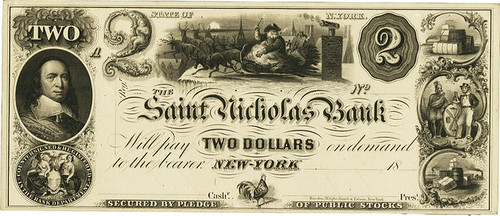
It’s bonus season, and while many in the junk bond market should expect coal in their stocking, the rest of Wall Street remains hopeful that Santa Claus remembers them this year. Given the Fed’s rate hike, though, more than a few financiers are losing faith.
It would help, perhaps, if Wall Street had a direct line to Santa Claus. Once upon a time, it did. For much of the 19th century, Santa Claus had a branch office at No. 12 Wall Street. This was the “Saint Nicholas Bank,” established in 1853 and capitalized at $500,000.
The origins of the Saint Nicholas Bank are a bit murky. Aside from the fact that it built a safe that Bankers’ Magazine described in 1854 as “the largest in the United States, if not the world,” the new institution attracted very little notice.
At this time, state-chartered banks in the United States issued their own currency, in denominations and designs of their choice. This system of private money creation flourished before the Civil War, with nearly 2,000 banks printing their own currency by the end of the 1850s.
The Saint Nicholas Bank printed money illustrated with – who else? – Santa Claus. The $1 and $3 bills showed Santa popping out of the fireplace to tend to children’s stockings. The big man was depicted in various poses in his reindeer-drawn sleigh on the $2, $5, and $10. The $20 and $50 showed the jolly old elf popping out of another fireplace, with sleeping children tucked into a bed a few feet away. (The rarely seen $100 note, by contrast, showed the U.S. Capitol building – so much for holiday cheer).
Still, why would Santa Claus adorn a bank note? The answer lies with the deeper history of New York City business and finance, and possibly, the man who would loom the largest over the bank’s reputation.
By the 1830s, New York City had become the capital of the Santa story that rested on a largely fabricated genealogy that paid homage to the city’s Dutch founders. Credulous readers learned that the first church in New York City was named for Saint Nicholas, and that the first Dutch ship to land had a figurehead of Saint Nicholas.
All of this made a certain amount of sense. A city founded on mercantile wealth and maritime trade would look toward St. Nicholas for protection of valuable cargoes. Indeed, it would be no exaggeration to say that St. Nicholas had become an informal patron saint of New York by the 1830s.
The notes of the Saint Nicholas Bank combine all of these elements. In addition to Santa Claus himself, several of the notes depict ships and the docks of New York; others show New Amsterdam’s famed governor, Peter Stuyvesant. Likewise, some of the buildings shown on the notes as a backdrop to Santa’s sleigh have the crow-stepped gables characteristic of Dutch architecture.
The people who founded the Saint Nicholas Bank are less well known. After a couple of years of high turnover, one man in particular stands out: a prominent New York merchant named Caleb Barstow, who became president in 1856 and remained in the position until 1874.
In an obituary from 1880, Bankers’ Magazine reported that his “deeds of charity were many and unostentatious” – strange behavior, perhaps, for a Gilded Age banker. Indeed, in its obituary, the New York Herald described him as “in some respects a very peculiar man,” even as it praised him for his “generous nature.”
In fact, it seems that Barstow took to heart the ethos of St. Nick, believing it better to give than to receive. He contributed heavily to charities and handed out food and clothing to the poor. And though he accumulated a large fortune in his lifetime, he died penniless.
Not long afterward his bank perished, too. A few days before Christmas in 1893, the State of New York declared the Saint Nicholas Bank insolvent. It closed its doors, never to reopen. In the canyons of Wall Street, a vision of Santa lingers. He's dressed in a business suit, a bundle of bonuses flung on his back.
To read the complete article, see:
When Santa Was a Bank
(www.bloombergview.com/articles/2015-12-24/when-santa-was-a-bank)

FEATURED WEB PAGE: C4 LENDING LIBRARY
This week's Featured Web Page is a listing of items in the Colonial Coin Collectors Club (C4) lending library, which are available free to members of C4 and Early American Coppers Inc (EAC).
www.colonialcoins.org/index.php/resources/12-pages/17-c4lendinglibrary

